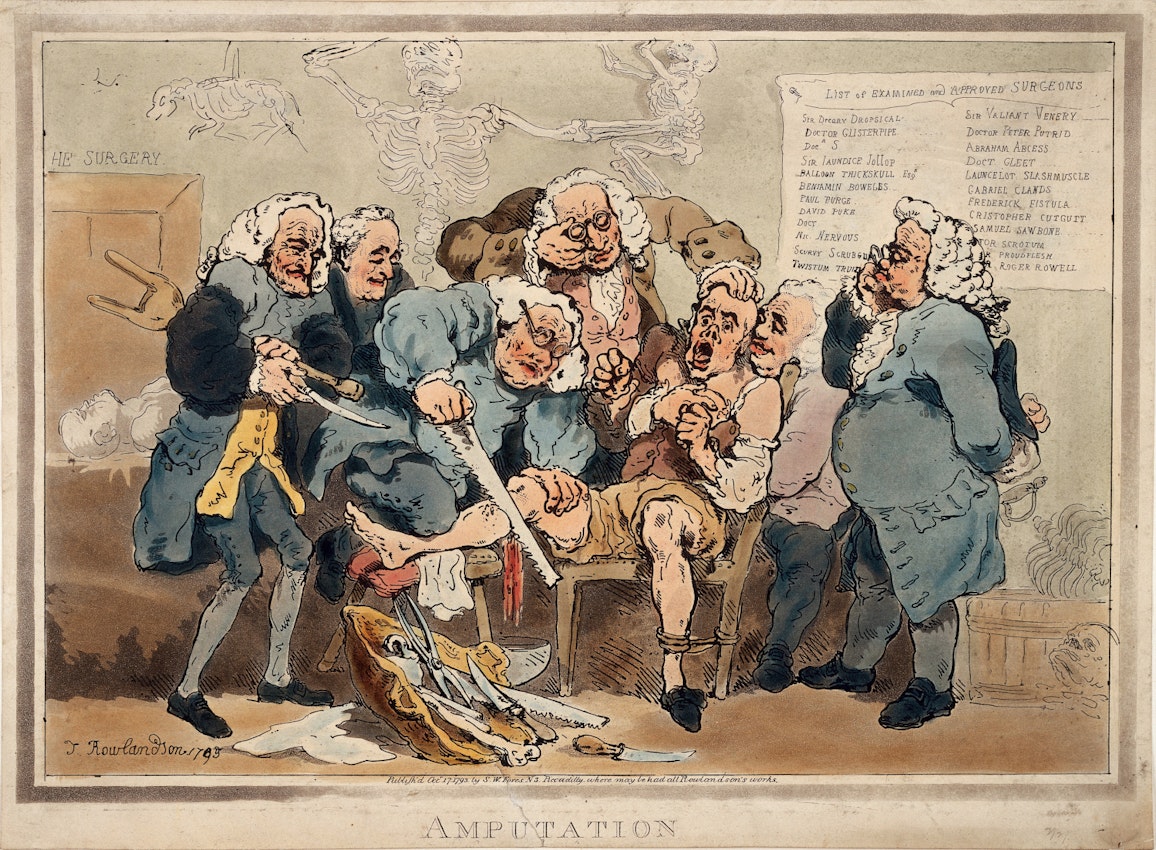Stop me if you’ve heard this one before: a doctor, an executioner, and a fan of “perver[sely]” violent fiction walk into a bar, cheerfully chatting about their shared passion for torture. Not ringing any bells? That’s likely because popular views on medicine have changed radically since 1848, when the above passage was penned. These days, it would seem borderline blasphemous to group physicians — now regarded by most as healers and helpers, sworn to do no harm — with two avowed sadists who watch suffering for sport. (Such an analogy would perhaps seem especially inapt in 2020, as countless medical professionals continue to put their own lives on the line to care for highly infectious COVID-19 patients.) But as it turns out, this excerpt’s framing of physicians as barbaric — as the kind of men who finger painful injuries with the “cool gayety” of an expert torturer — would not have surprised many Americans in the nineteenth century. Far from it: the sicko doctor, whose fascination with the human body’s gory workings makes him creepily indifferent to his patient’s discomfort, routinely cropped up as a bogeyman in the fiction, political cartoons, and nonfiction of the antebellum United States.
To understand why this was the case, we might take a closer look at the above-excerpted review, which uses a metaphorical doctor to evoke a real ethical question that obsessed Americans at the time: the appropriate way to relate to other people’s suffering. In attacking Philadelphian provocateur George Lippard’s novel Ladye Annabel (1844), pseudonymous reviewer Motley Manners suggests that the book’s explicit portrayals of medieval torture bespeak a “morbidity” and “pervers[ity]” on the parts of its characters, writer, and reader alike. (Manners is no innovator here: the gruesome content of Gothic literature, which supposedly both appeals to and breeds creeps, has produced moral panics ever since its inception in the late eighteenth century — panics which live on in pearl-clutching condemnations of horror movies and fans today.) But what Manners seems to find even more unsettling than the Ladye Annabel executioner’s actual participation in wheel-breakings and drawings and quarterings is the character’s breezy attitude toward his bloody deeds — the “cool gayety” with which he recounts them.
The seeming paradox of this particular phrase, which mixes apathy with joy, would have seemed no paradox at all to a nineteenth-century reader. Americans of this epoch were preoccupied with the idea that there was a causal relationship between the two emotions — that feeling indifference toward the pain of others threatened to eventually become active pleasure in the pain of others. All it took to desensitize a given observer, the thinking went, was overexposure to suffering — the kind of daily saturation with groans and gore that are the everyday experience of a professional flesh-cutter like a torturer. Or a doctor.

Amputation, hand-coloured etching by Thomas Rowlandson, 1793 . A group of six surgeons and doctors surround a terrified man as he has his leg amputated — Source.
